Contents
| |||||
| Centuries: | |||||
|---|---|---|---|---|---|
| Decades: | |||||
| See also: | List of years in Scotland Timeline of Scottish history 1650 in: England • Elsewhere | ||||
Events from the 1650s in the Kingdom of Scotland .
| |||||
| Centuries: | |||||
|---|---|---|---|---|---|
| Decades: | |||||
| See also: | List of years in Scotland Timeline of Scottish history 1650 in: England • Elsewhere | ||||
Events from the 1650s in the Kingdom of Scotland .

Marmaduke Langdale, 1st Baron Langdale was an English landowner and soldier who fought with the Royalists during the Wars of the Three Kingdoms.
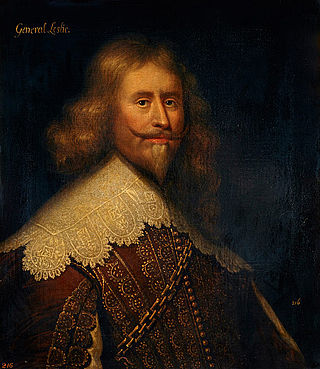
Alexander Leslie, 1st Earl of Leven was a Scottish military officer and peer. Born illegitimate and raised as a foster child, he subsequently advanced to the rank of field marshal in Swedish Army, and in Scotland became Lord General in command of the Army of the Covenanters, a privy councillor, captain of Edinburgh Castle, Lord Balgonie and Earl of Leven. In England he commanded the Army of the Solemn League and Covenant and was senior commander of the Army of Both Kingdoms (1642–1647). Leslie served in the Thirty Years' War, the Bishops' Wars, and most of the English Civil War, fighting primarily in the First English Civil War. Leslie would live a long life, dying roughly at the age of 80 or 81.

William Hamilton, 2nd Duke of Hamilton KG was a Scottish nobleman who supported both Royalist and Presbyterian causes during the Wars of the Three Kingdoms.
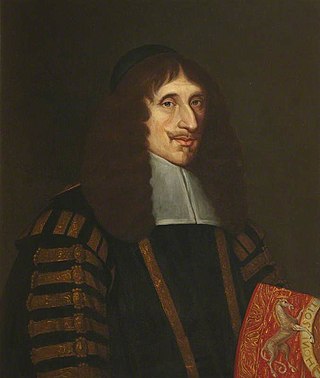
John Campbell, 1st Earl of Loudoun was a Scottish politician and Covenanter.

Archibald Campbell, Marquess of Argyll, 8th Earl of Argyll, Chief of Clan Campbell was a Scottish nobleman, politician, and peer. The de facto head of Scotland's government during most of the conflict of the 1640s and 1650s known as the Wars of the Three Kingdoms, he was the main leader of the Covenanter movement that fought for the Establishment of Presbyterianism in opposition to the preference of King Charles I and the Caroline Divines for instead Establishing both High Church Anglicanism and Bishops. He is often remembered as the principal antagonist to the Royalist general James Graham, 1st Marquess of Montrose.

David Leslie, 1st Lord Newark was a Scottish military officer and peer. During the Thirty Years' War, he joined in the Swedish Army in 1630 and served under Alexander Leslie. Returning to Scotland in the final days of the Bishops' War, Leslie fought in the English Civil War and Scottish Civil Wars on the side of the Covenanters and Royalists. After the Stuart Restoration, Leslie was raised to the peerage of Scotland as Lord Newark by Charles II of England.

The Anglo-Scottish war (1650–1652), also known as the Third Civil War, was the final conflict in the Wars of the Three Kingdoms, a series of armed conflicts and political machinations between shifting alliances of religious and political factions in England, Scotland and Ireland.

Between 1639 and 1652, Scotland was involved in the Wars of the Three Kingdoms, a series of wars starting with the Bishops' Wars, the Irish Rebellion of 1641, the English Civil War, the Irish Confederate Wars, and finally the subjugation of Ireland and Scotland by the English Roundhead New Model Army.

William Keith, 7th Earl Marischal was a Scottish nobleman and Covenanter. He was the eldest son of William Keith, 6th Earl Marischal.

Sir William Lockhart of Lee (1621–1675), was a Scottish soldier and diplomat who fought for the Covenanters during the 1638 to 1651 Wars of the Three Kingdoms. Following Royalist defeat in the 1642 to 1647 First English Civil War, Lockhart took part in negotiations between Charles I and Scottish Engagers, who agreed to restore him to the English throne.
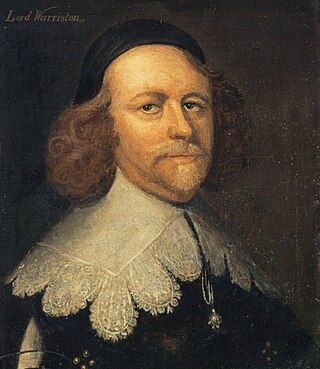
Archibald Johnston, Lord Wariston was a Scottish judge and statesman.
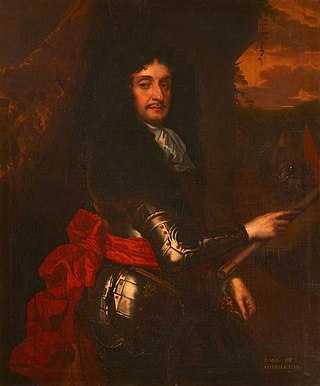
John Middleton, 1st Earl of Middleton was a professional soldier and mercenary from Kincardineshire in Scotland. Beginning his career in the Thirty Years War, during the Wars of the Three Kingdoms he fought for the Covenanters and Parliamentarians until 1648, when he switched sides to the Royalists.
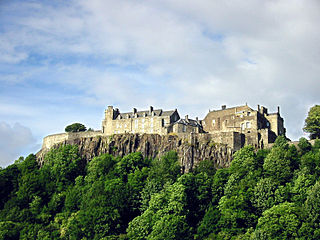
The second Battle of Stirling was fought on 12 September 1648 during the Scottish Civil War of the 17th century. The battle was fought between the Engagers who were a faction of the Scottish Covenanters under the command of George Munro, 1st of Newmore and who had made "The Engagement" with Charles I of England in December 1647, against the Kirk Party who were a radical Presbyterian faction of the Scottish Covenanters who were under the command of Archibald Campbell, 1st Marquess of Argyll.
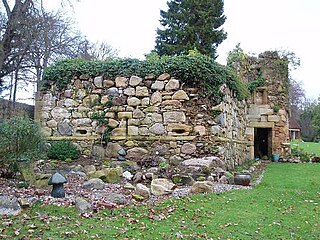
Sir George Munro, 1st of Newmore (1602–1693) was a 17th-century Scottish soldier and member of parliament from the Clan Munro, Ross-shire, Scotland. He was seated at Newmore Castle. Between 1629 and 1634 Munro held command in the Swedish army during the Thirty Years' War, and from 1642 in the Scottish Covenanter army during the Irish Confederate Wars before changing his allegiance to the Royalist cause of Charles I in 1648 during the Scottish Civil War and Irish Confederate Wars.
William Douglas, 1st Marquess of Douglas and 11th Earl of Angus (1589–1660) was a Scottish nobleman.
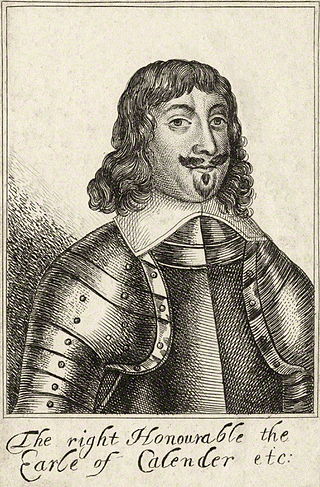
James Livingston, 1st Earl of Callendar, was a Scottish army officer who fought on the Royalist side in the Wars of the Three Kingdoms.
Archibald Douglas, Earl of Angus, 1st Earl of Ormond was the eldest son of William Douglas, 1st Marquis of Douglas, from whom he obtained the courtesy title of Earl of Angus. Douglas was a member of privy council of Scotland, 1636; vacillated in his opinions on the new service-book, originally (1636) approving its use. Appointed extra ordinary lord of session in 1631. He signed the covenant, was unwilling to take up arms in its defence, but was a commissioner for the covenanters in England in 1643. In 1646 made colonel of Régiment de Douglas in France when his brother Lord James Douglas, was killed in action. Member of committee of estates in 1650. Created Earl of Ormond in 1651; fined £1,000 by Cromwell's Act of Grace, 1654.
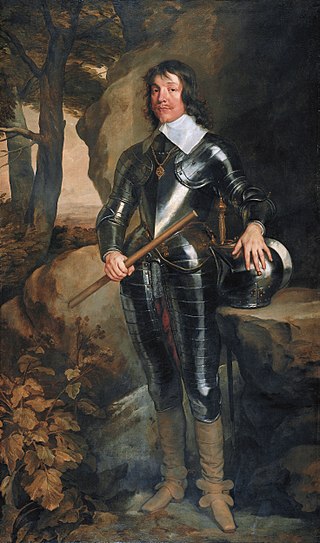
James Hamilton, 1st Duke of Hamilton, KG, PC, known as the 3rd Marquess of Hamilton from March 1625 until April 1643, was a Scottish nobleman and influential political and military leader during the Thirty Years' War and the Wars of the Three Kingdoms.

Scotland under the Commonwealth is the history of the Kingdom of Scotland between the declaration that the kingdom was part of the Commonwealth of England in February 1652, and the Restoration of the monarchy with Scotland regaining its position as an independent kingdom, in June 1660.
This is a timeline of events leading up to, culminating in, and resulting from the Wars of the Three Kingdoms.